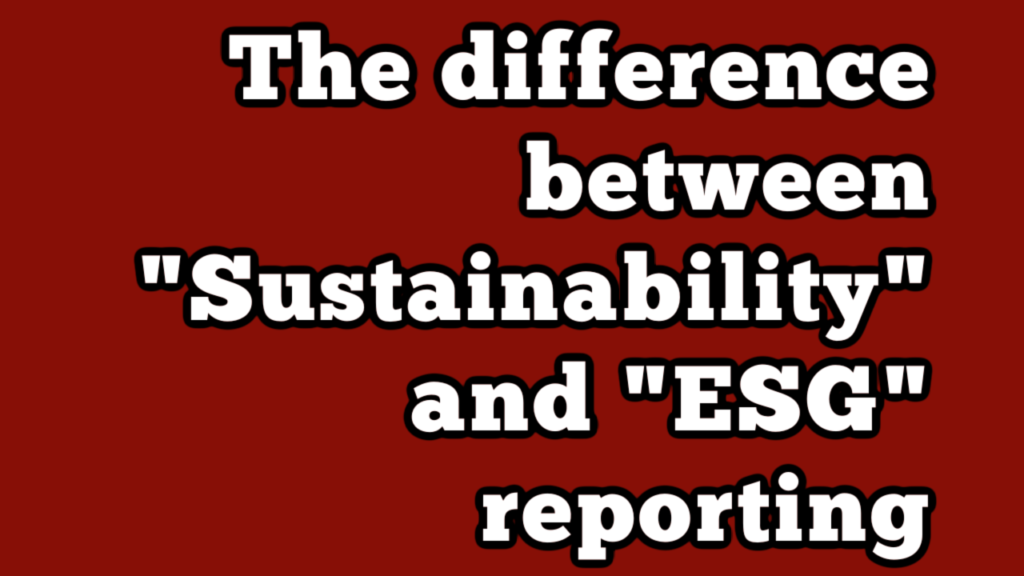The difference between “Sustainability” vs “ESG” reporting

Here’s the intro from this article by Bob Willard that might be useful to those still trying to wrap their minds around “double materiality” and similar concepts:
Once upon a time, I began presentations on sustainability-related topics with a snorkel in the terminology swamp. I’d compare and contrast about a dozen terms in the “sustainability” alphabet soup – CSR, SDGs, CR, 3BL, 3Ps, 3Es, etc. Then I’d declare that they were all close enough to be synonyms for “sustainability” and move on. After a while, I stopped doing that. Now, I find it necessary to do it again, primarily to clarify “sustainability” vs. “ESG” usage these days.
Inside-Out / Sustainability
In the beginning, sustainability champions focused on trying to convince companies to cause less harm to society and the environment. We wanted them to stop polluting, treat their employees better, and help build communities – to be more sustainable. Then, we wanted them to be net positive – to not only cause less harm, but also be restorative and regenerative. “Sustainability” reporting informs stakeholders about the organization’s inside-out impacts – its positive and negative impacts on people and planet. Inside-out sustainability reporting frameworks include the Global Reporting Initiative (GRI), the Future-Fit Business Benchmark, the B Corp B Impact Assessment, and the Basic Sustainability Assessment Tool.
Outside-In / ESG
Then, ESG (Environmental, Social, Governance) entered the lexicon. As first, it was a synonym for sustainability. The G helped legitimize sustainability as a business issue worthy of boardroom and C-suite attention. Then the financial community morphed the ESG noun into an adjective for risks. What lenders and investors wanted to know was whether a company was at risk from environmental and social impacts on the business. If so, they would be more cautious about providing capital to a risky company.
What ESG risks should concern capital providers the most? The annual Global Risks report by the World Economic Forum provides that guidance. It examines about two dozen risks that could do damage to economies / businesses within the next ten years. It classifies the risks into five categories: Technological, Geopolitical, Economic, Environmental, and Societal. Since 2016, the risk with the highest impact and highest probability of happening with the ten-year timeframe has been in the Environmental category: “Climate Action Failure.”
Also see this note from Ken Pucker:
If you are wondering if there is a difference between ESG and Sustainability, look no further.
See below the top holdings of the S&P 500 ESG Index (the same one that dropped Tesla last week). Note that (a) the constituent equities map closely to the S&P 500 – non ESG fund; (b) Exxon is a top holding; (c) so too JP Morgan (the world’s largest financier of fossil fuel companies and infrastructure – $62b in 2021) and Bank of America …the #4 funder at $31b.
ESG is primarily focused on assessing risks and opportunities to companies as a result of evolving social, environmental and governance factors. As practiced in the US (single materiality) it is principally about the impact of the world on the company….not the impact of the company on the planet. Thus, it does not make sense to conflate ESG investment with planetary action / sustainability. They are very different things.
